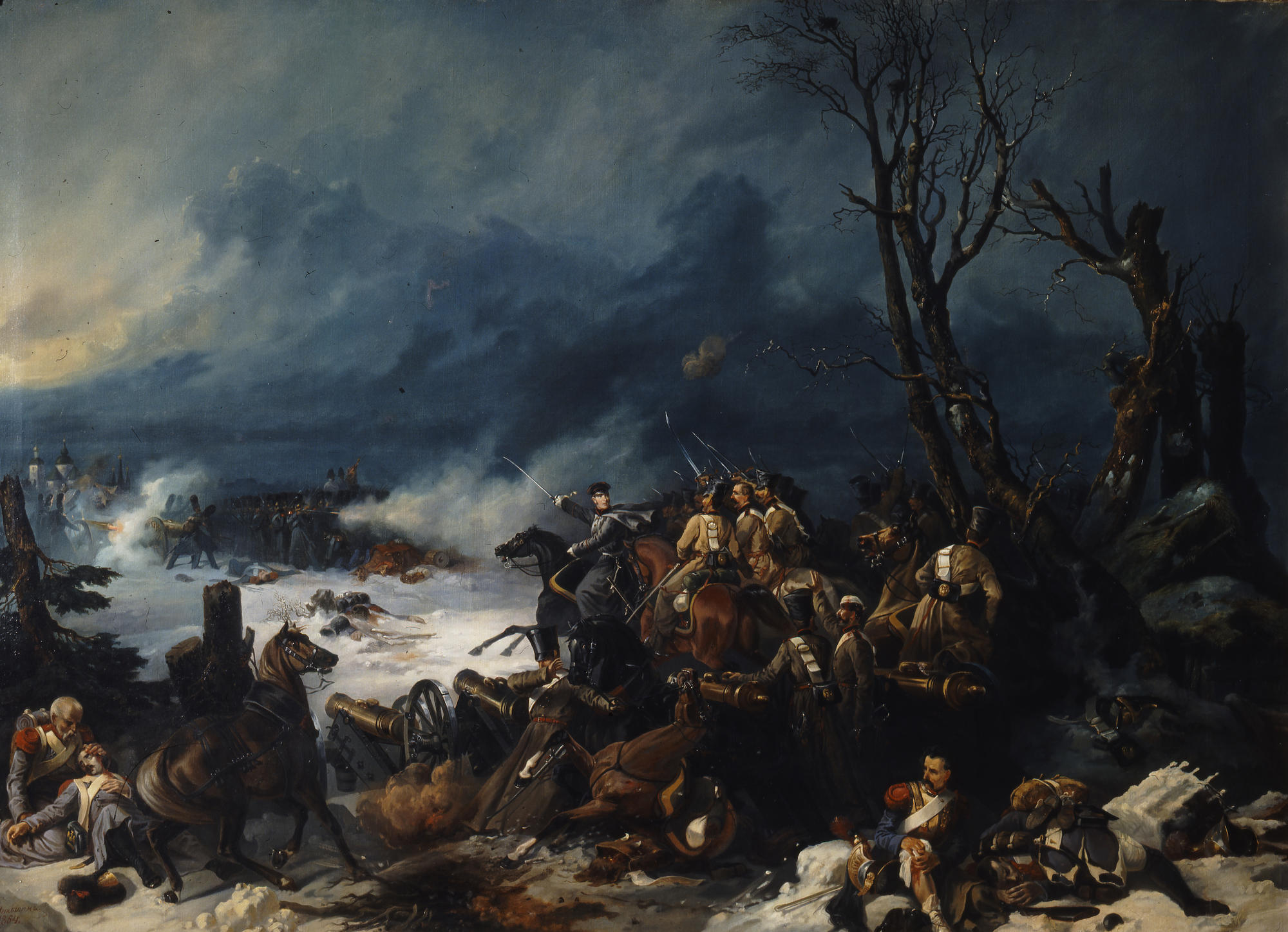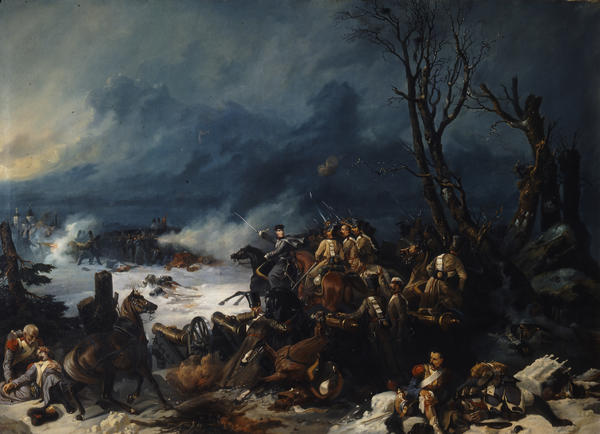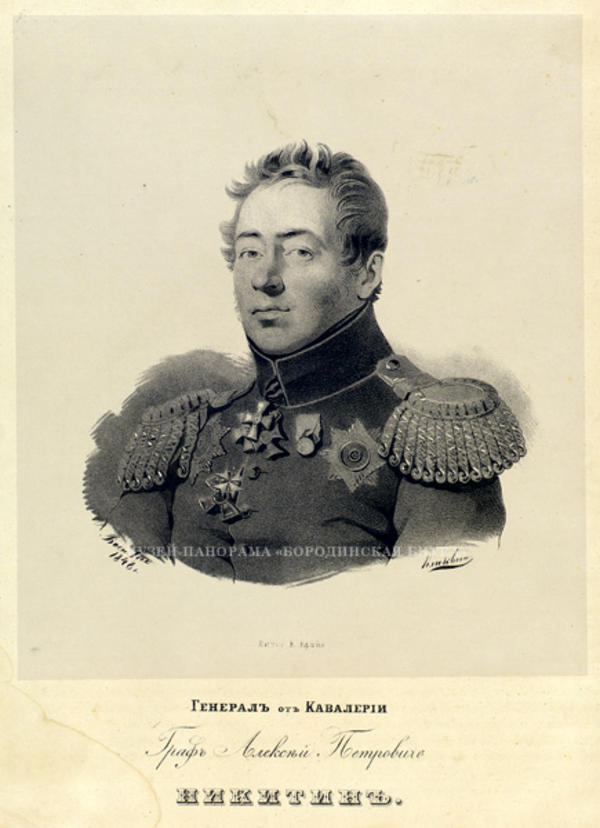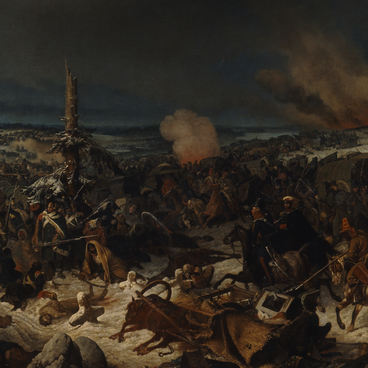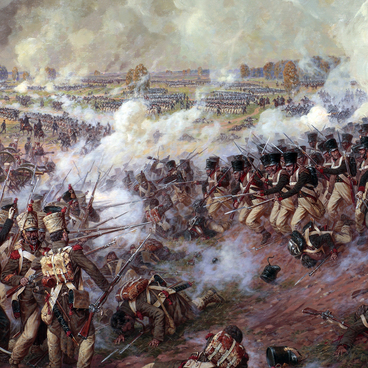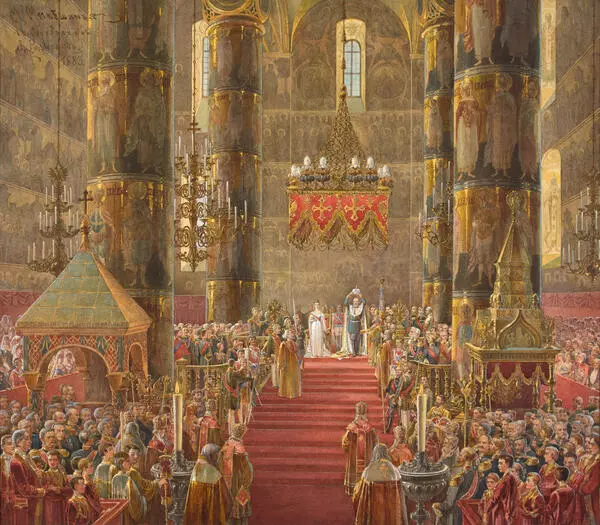At a distance, one can see Napoleon’s infantry in a high-density formation and an artillery battery delivering fire. Behind the rows of French troops, the buildings of Krasny are rising. It is difficult to determine to which military unit or formation the enemy’s troops participating in this battle belonged. .
At the forefront, the artist depicted four Russian artillery pieces in firing position. At the leftmost gun, the gunner is rushing away from the enemy’s grenade. A grenade was a cast iron spherical shell with the core space filled with gunpowder. At the time of the shell burst, fragments flew apart within the radius of 500 steps. The artillery man on the painting has little chance to survive: the grenade is about to burst and he is too close.
On the left, the artist depicted a dramatic scene: a wounded French man is dying at the hands of his comrade. The uniform details – red epaulettes and a fur hat with a copper plate lying on the snow suggest that they are grenadiers.
On the snow on the right, a French cuirassier is sitting. He wears a cuirass – metal plate protecting the horseman’s chest and back, with a helmet lying next to him. The cuirassier is wounded in the shin or in the knee of his right leg. By the middle of November 1812, the part of Napoleon’s main forces heavy cavalry that participated in the march on Moscow, practically ceased to exist.
In their memoirs, the French and their allies described terrible frost allegedly set in November 1812. However, according to extant meteorological observations, during the battle of Krasny, the air temperature was only 2-4 degrees below zero.
Nikitin’s company attack was crowned with full success: the French infantry was overrun, the Russians captured up to 300 prisoners and seized two artillery pieces. On the same day, the Russian troops liberated Krasny from the enemy. In his memories, Nikitin noted: ‘By this attack, the city was cleared’.
